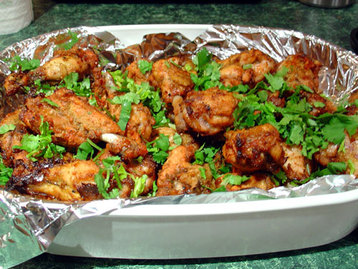SHORT HISTORY OF CUMIN

Source: Terra EarthFood
The earliest mentions of cumin in history come from the second millennium BCE. It was always used as a spice in cooking. According to the New World Encyclopedia, Iran was the principal supplier historically, but nowadays Sri Lanka, Syria, Pakistan, and Turkey are major suppliers in the Arab world. The Egyptians used cumin to aid in mummification. It is was a common spice to have on the table to add to any dish. The ancient Greek and Romans also used the spice heavily. In addition, later on in time the Spanish brought it to the Americas.
WHAT IS CUMIN?

Cuminum cyminum
Cumin in its primary form is a flowering plant. It comes from the parsley family with the scientific name cuminum cymium. This flower germinates in one to two weeks. There are two types of cumin. One is just plainly called cumin and is a tan color in fruit form and black cumin which has tan colored fruits. Although the flower produces fruit, they are often called seeds and that is accepted universally because of their appearance when dried. It thrives is dry and arid climates with a lot of sun. The indicator that the fruit is ripe is when it turns brown. After it ripens, it takes a little while longer before the seeds on the inside drop out, so they must be harvested within that timeframe.
MEDICINAL USES OF CUMIN
Most of the uses of cumin are not of the ground up spice, but of the fruit. In many cases they were put in mixtures such as teas. Furthermore, the fruit is extracted for its essential oil and the aroma can aid in clearing of nasal passages and that nature. In Islam, black seed cumin is seen to be the cure for “everything but death.”
- High in iron
- Good for lactating mothers
- Helps with nausea with pregnant women
- High in fiber
- Helps with digestion
- Soothes stomach aches (toast the seeds and put them in water)
- Anti-inflammatory, anti-fungal, and antibacterial properties
- Fights the common cold
- Fights asthma
- Soothes inflamed muscles
- High in Potassium
- Regulates blood pressure
- Hair–
- Prevents dandruff
- Prevents hair loss
- Prevents thinning of hair
- Helps hair become long and shiny
- Vitamin E
- Good of skin (helps fight premature aging)
- High in minerals
- Helps restore memory
CUMIN IN FOOD
Cumin is used as a flavor enhancer. According to various sources it has a bitter earthy taste and according to others it brings out the sweetness in dishes. Cumin in hindi is called Jeera. There are many Jeera focused dishes such as Jeera Chicken, Jeera Vegetables, Aloo Jeera, and Jeera Rice. Also, it was used in hummus, meat stews, and much more.

Jeera Chicken

Aloo Jeera

Hummus with cumin
CUMIN IN RELIGION
“Woe unto you, scribes and Pharisees, hypocrites! For ye pay tithe of mint and anise and cummin, and have omitted weightier matters of law, judgement, mercy, and faith: these ought ye to have done, and not to leave the other undone”
-Matthew 23:23
“Does he not level its surface and sow dill and scatter cummin and plant wheat in rows, barley in its place and rye within its area?”
-Isaiah 28:25
Sources:
“Cumin.” New World Encyclopedia, 7 Nov. 2011 http://www.newworldencyclopedia.org/entry/Cumin.
“Jeera Recipes.” NDTV Food, https://food.ndtv.com/topic/jeera/recipes.
“How to Grow Cumin.” Herb Gardening, http://herbgardening.com/growingcumin.htm
The Holy Bible, New International Version. Grand Rapids: Zondervan House, 1984. Print.
“Terra-Cumin Powder.” Terra Earthfoods, https://www.terraearthfood.com/products/terracuminpowder.
“Cumin.” World Crops Database, 2018. https://www.world-crops.com/cumin/.